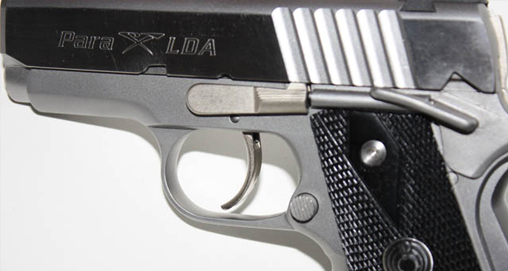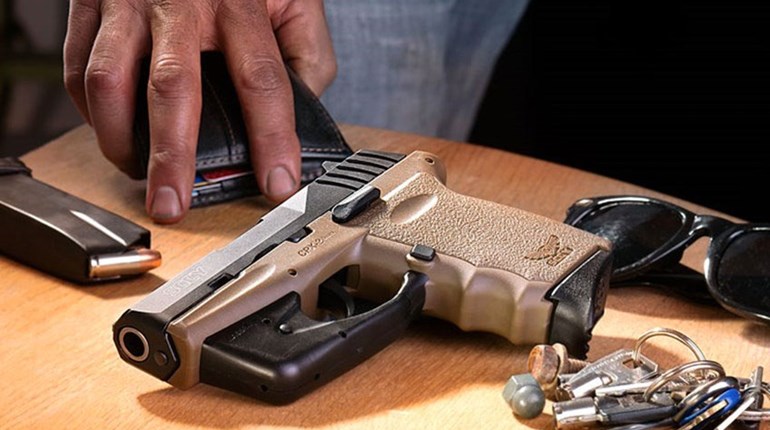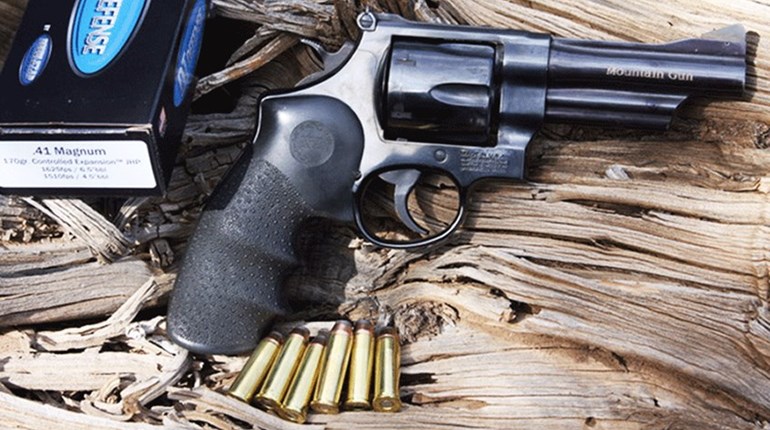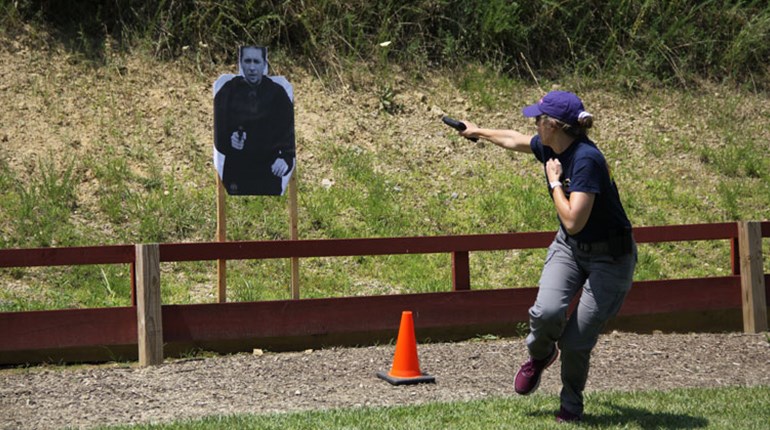
"I'm thinking about purchasing a handgun for self-defense, what type should I buy?"
The question was posed to me with mind-numbing regularity for more than 10 years when I worked as a membership specialist at NRA Headquarters. Although the inquiry was outside the purview of my job, when it came time to add it to my repertoire of information, I made it a point to provide an answer devoid of any personal opinion and geared toward the end user.
But, there's more to it than that. When the question pertains to selecting a handgun for someone with a physical disability, the answer is not simply a matter of determining what they want or even what they can afford. The decision must also be weighed within the limitations of one's disability.
Rather than rehashing the revolver-versus-semi-automatic debate, let's admit up front that both have pros and cons. While either can serve you well, identifying those advantages/disadvantages that apply to your ailments and disabilities will assist you in making the right selection. Pick the style that's easier to use, not only in terms of safety and function, but more importantly as it pertains to your physical limitations.
No matter if you're a new shooter or chronic lead-slinger, a lot of thought should go into firearm purchases. It's OK if you have no preference in the beginning. Start by getting the necessary, professional training. The operative word here is professional. Avoid seeking training from friends and/or loved ones who are shooters. While your association may not hinder getting the training you need, insist on top-notch training from a professional firearms instructor. It may cost more, but the end result will establish a solid foundation you can build upon—free of improper information and/or technique.
For those newcomers torn between purchasing a revolver or semi-automatic, the National Rifle Association offers the perfect solution in the form of its Basic Pistol course. NRA courses are designed help people develop the essential skills required to handle firearms safely and effectively, regardless of age, level of expertise or type of firearm. This carte blanche approach is better emphasized with regard to teaching those with disabilities. Naturally, successful completion requires fulfilling the course's objectives, so simply put, disabilities don't factor in. Since NRA's Education and Training Division prides itself in offering training to anyone, its certified instructors demonstrate that commitment with regularity. While they may not say so, they understand the challenge you're faced with, and as such will typically go the extra mile to help you.
In addition to learning the different types of handguns to choose from, NRA's Basic Pistol course also provides newcomers with the opportunity to handle a variety of pistols, including various sizes of revolvers and semi-automatics in different calibers. Best of all, it includes a detailed lesson designed to make an informed and wise purchase when the time comes to buy your first handgun. I refer to it as "first," due to more than just the obvious distinction.
Unfortunately, not all firearm training facilities are as accommodating toward people with disabilities. As baby boomers get older and find themselves caring for loved ones, I anticipate facilities will eventually establish new policies to suit the changing tide. Many years ago, during a visit to Gunsite Academy, a staff member told me I was one of its first disabled students. Whether a result of the honor or surprise that followed, I remember thinking how such an accolade could be good or bad. However, when I left five days and 1,500 rounds later, my time there proved to be decidedly positive.
Looking back, I attribute the experience not just to the academy's willingness to train me or even its accessible facility, but rather the asset of its forward-thinking instructors who challenged me to devise solutions to problems as they arose while staying in the fight. Motivation like that is what distinguishes some training facilities from others.
Investing in quality training provides you with more than just a rudimentary knowledge of different types of firearms, their function and the fundamentals of marksmanship. It can serve as a starting point for purchase. For example, if you exhibited greater proficiency with 9 mm and .38 Spl. pistols than with models in .45 ACP and .40 S&W, those calibers offer a step in the right direction. Yet, comfort is also an extremely important, albeit often overlooked factor, too.
If the double-action pull of the instructor's Charter Arms Undercover proved too heavy or led to an evening of arthritic rebellion, take that as a possible cue to consider a semi-automatic of moderate caliber, such as 9 mm, featuring either a trigger with a lighter pull weight or a shorter amount of travel (also referred to as throw). While these criteria immediately give ground to the immense realm of the 1911-style pistols and its copious clones, Para USA's PDA is also a viable option, thanks to the manageable 9 mm chambering and the ultra-crisp and light pull associated with its LDA trigger.
In his article "Christina," fellow gunwriter Mark Moriz describes the challenges he encountered when training a student afflicted with Osteogenesis Imperfecta. A genetic disorder, those born with it are affected by extremely brittle bones that break very easily. To compound matters, it is characterized by symptoms such as fatigue, joint laxity, curved bones, scoliosis, blue sclerae, muscle weakness and small stature—the latter of which dictate handgun selection be strictly limited to calibers with low recoil.
While most would consider a subcompact semi-automatic like the Ruger LCP as a potential candidate, keep in my mind selecting a firearm for self-defense is all about making tradeoffs. For example, small lightweight handguns have less mass to absorb recoil, and while they tend to possess little in the way of muzzle flip, they can still prove uncomfortable to shoot—even in the hands of someone without a disability—especially when +P ammunition is in the equation.
In Christina's case, recoil from a Glock 9 mm proved too abusive due to her tiny hands and child-like strength. While a Smith & Wesson J-frame was better in size, she could only pull its 10-pound double-action pull half way. However, there was another problem: Revolvers point higher by design, forcing the shooter to flex their wrists downward. Christina's wrists were incapable of flexing. They switched to a Colt Government Model chambered in .380 ACP, which fit her hand perfectly, but with an 11-pound trigger pull the pistol was too difficult to fire. And when she did muster the strength to fire the pistol, it was quite painful.
Through trial and error, the solution came in the form of a Beretta M86 Cheetah. Larger than the Colt, the extra weight—26 ounces—turned out to be beneficial in offsetting .380 ACP recoil, while simultaneously resolving comfort issues. Best of all, the M86's tip-up barrel enabled Christina to load and unload the pistol without cycling the slide. Although she didn't have the strength to successfully shoot the Cheetah in double-action mode, thanks to its thumb safety, she was able to carry the pistol cocked and locked like a 1911. The Beretta's tip-up barrel was even advantageous with regard to cleaning, as it gave her the ability to clean the pistol's barrel and feed ramp without field stripping.
Selecting a handgun for self-defense is more than deciding between a revolver or semi-automatic. It's largely a matter of personal preference, similar to when you buy a pair of shoes. It has to fit you. So, I urge you to make the decision based on what works for you, rather than the opinion of a friend or gun shop employee in search of a sale.
While it's easy to offer long-distance advice that may or may not be ideally suited for you, some general distinctions between the different types of handguns may prove more beneficial in the decision-making process.
In the next installment I'll take a look at things you should consider when selecting a handgun that fits.


































